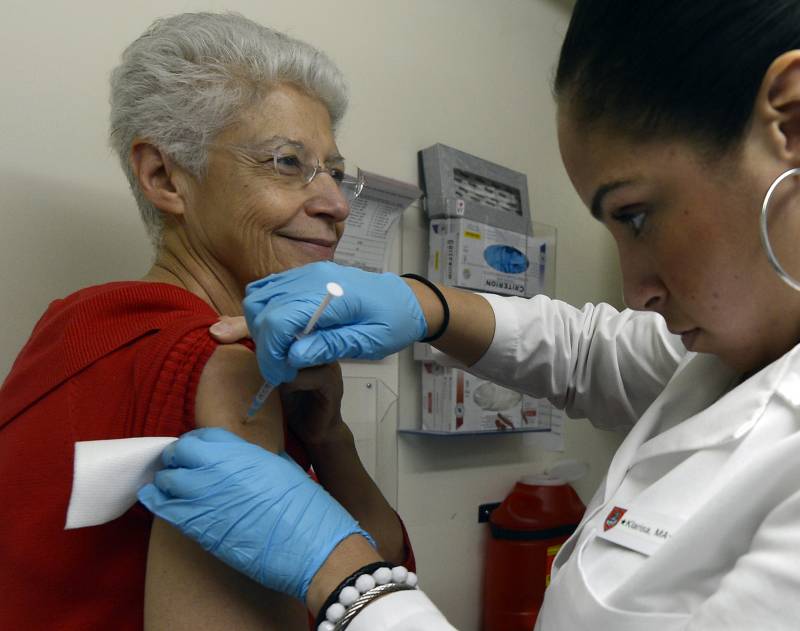In the U.S., the real threat to my health and yours is this year’s flu.
The federal Centers for Disease Control and Prevention estimates influenza has caused hospitalizations and 16,000 deaths in the U.S. this season. The fatalities include 105 children.
“This new coronavirus is mysterious,” said Dr. William Schaffner, infectious disease specialist at Vanderbilt University. “The experts don’t know very much about this virus yet and what it does. And so it’s it’s not surprising that here in the United States we have an outbreak of coronavirus anxiety.”
As of this writing, health authorities have confirmed 60 cases of novel coronavirus in the U.S.
How Deadly is the Flu?
The 1918 influenza pandemic infected one-third of the world’s population and killed close to 50 million people. A century ago, public health was very different. These days the flu kills, on average, 10-40,000 Americans a year. Usually the risk is greatest for older people or anyone with a preexisting condition. Kids appear to be especially sensitive to this year’s flu.
“We in infectious diseases regard influenza with great seriousness,” Schaffner said. “And that’s why, of course, we urge vaccination.”
He highly recommends regular hand washing. Public health experts do not recommend wearing a mask to ward off either the flu or the coronavirus.
How Contagious is the Novel Coronavirus?
The novel coronavirus is thought to have originated in a seafood market in Wuhan, the political, cultural and economic hub of central China. Scientists have not yet identified the animal host, or the way the virus spread to humans. Now it passes from person to person through respiratory droplets from coughs or sneezes, pretty much like the flu and the common cold.
There are no confirmed cases in northern California. If that changes, public health officials in the region say they’re ready.
“We have physicians staffing call lines 24 hours a day all week,” said Dr. Susan Philip at the San Francisco Department of Public Health’s emergency command center. “And we are able to communicate and advise providers and emergency departments about how to proceed.”
Philip urges anyone who has recently traveled to China to see a doctor if they experience flu-like symptoms like a cough, shortness of breath, or fever.
How Lethal is the Novel Coronavirus?
It’s very difficult to know how deadly the novel coronavirus is because it’s still very early in the outbreak. According to statistics published Feb 24 in JAMA, 2.3% of infected patients have died. Half of the fatalities have occurred in patients 70 and older. That’s worse than the seasonal flu, and better than two earlier coronaviruses you may have heard about.
In 2003 Severe Acute Respiratory Syndrome (SARS) killed 774 people. That virus originated in civets, a mammal native to tropical Asia and Africa. It killed about one in ten people who were infected. The Middle East Respiratory Syndrome (MERS), which originated in camels, has killed 858 people since 2012. About one in three people who contract MERS die.
Dr. Charles Chiu, an infectious disease specialist at UCSF, said the novel coronavirus will change as it evolves in humans. “It will continue to mutate and continue to circulate as long as there are infections ongoing. There is a potential that the virus could mutate into a form that may be more or less transmissible, or more or less virulent.“
